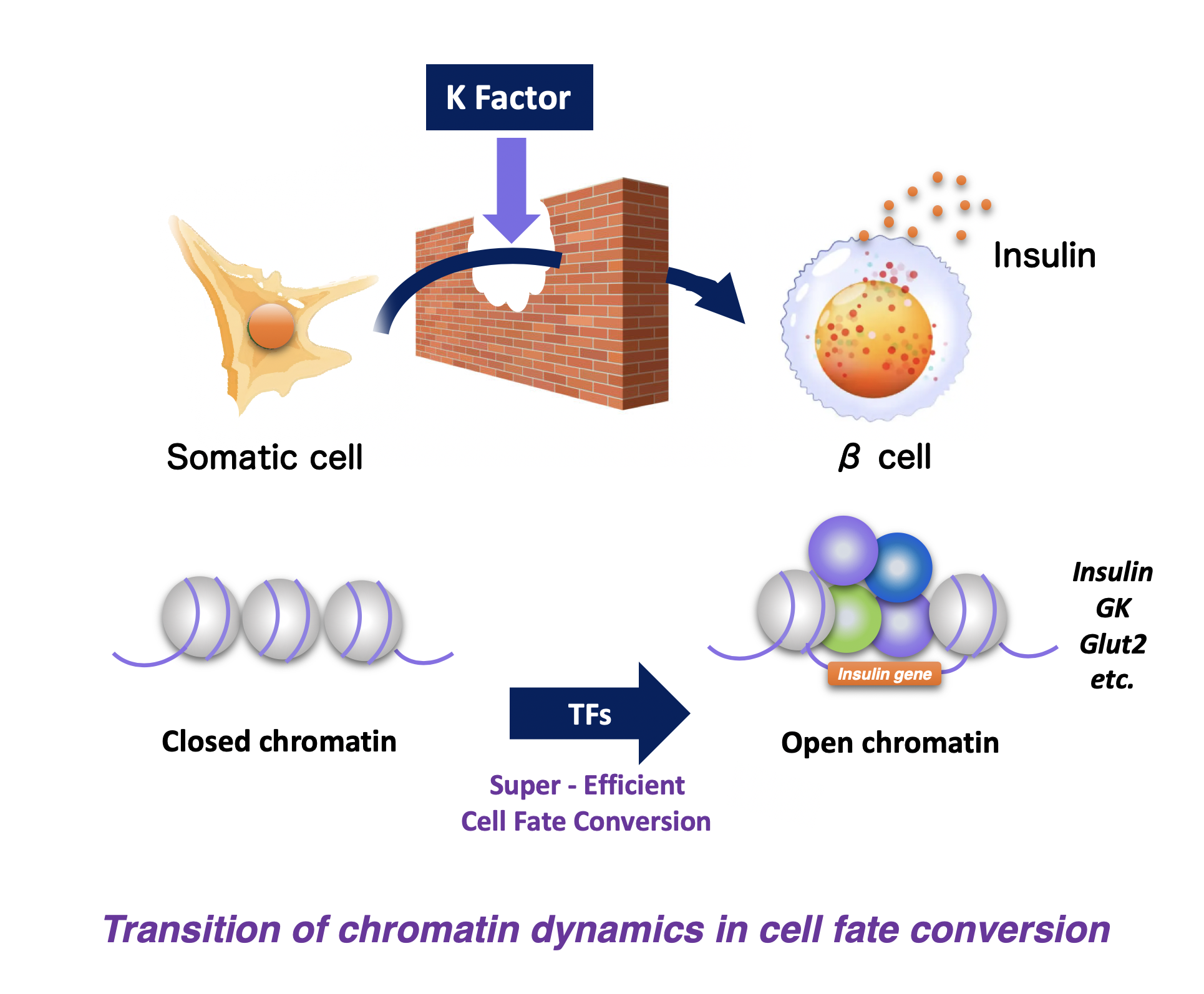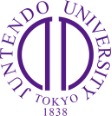Direct reprogramming is a technique called direct differentiation in which somatic cells1) in the body are transformed into cells with completely different target characteristics. This technology is a method of directly converting already differentiated cells into another type of cell without going through undifferentiated stem cells such as iPS cells2) or ES cells3). Particular attention has been paid to approaches that use transcription factors4) to directly convert one specific cell into another.
It is hoped that this technology can be used in the future to produce healthy cells to treat diseased and damaged organs and cells.

We have succeeded in generating cells from somatic cells such as fibroblasts that secrete insulin in response to glucose with ultra-high efficiency. At this point, the K-factors we have identified demonstrate the ability to lower the wall that stands between the somatic cell and the pancreatic β-cell (above figure). This phenomenon, called direct reprogramming, is a breakthrough cell fate-transforming technology.
Introduction of transcription factors
It is a method of altering the fate of a cell by introducing a specific transcription factor into a differentiated cell. This transcription factor serves to reprogram the cell into another type.
It is called Direct Reprogramming or Direct Conversion, Trans differentiation, Direct Differentiation, or Cell Fate Conversion.
The phenomenon of direct reprogramming is supported by the dynamic conversion of aggregated chromatin5) structures in the nucleus, which controls genetic information, to create open chromatin structures and induce the expression of specific target genes.(See the lower side of the figure above. Purple line: gene (DNA); gray: chromatin; left side: aggregated chromatin structure; purple, blue, and green: transcription factors; open chromatin structure with transcription factors bound to the insulin gene regulatory sequence).
The time to treatment can be shortened and costs can be reduced because the target cells needed can be directly produced without having to recreate undifferentiated pluripotent stem cells once again, as is the case with iPS cells. It also reduces the risk of neoplasticity because the process of creation back to an undifferentiated state can be skipped.
While the creation of ES cells involves ethical and technical challenges, direct reprogramming avoids such problems.
The ability to create cells with specific functions and phenotypes needed directly from already differentiated somatic cells offers great potential for restoring the function of genes, cells and organs that have lost their functions and for developing new therapies.
1) somatic cell
It refers to all the cells that make up the body.
2) iPS cell
iPS cells (Induced Pluripotent Stem Cells) are cells that can be reverted to a state similar to early embryonic stem cells by introducing specific genes into adult somatic cells.
3) ES cell
ES cells (Embryonic Stem Cells) are cells extracted from the embryonic stage of a fertilized egg after it first divides. They are pluripotent in that they can differentiate into all types of cells.
4) transcription factor
A protein that uses genetic information to regulate the expression (function) of a specific gene within a cell.
5) chromatin
It is a complex of proteins (histones) wrapped around DNA. Chromatin plays an important role in regulating gene expression, preparing cells for cell division, and protecting DNA.
